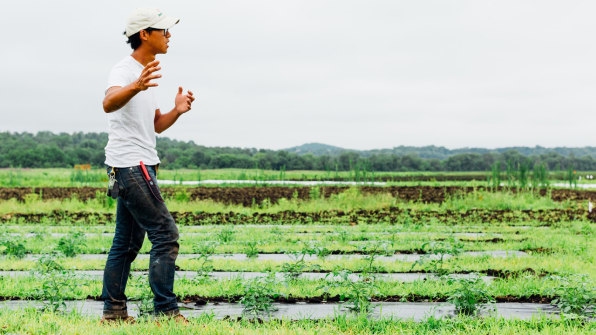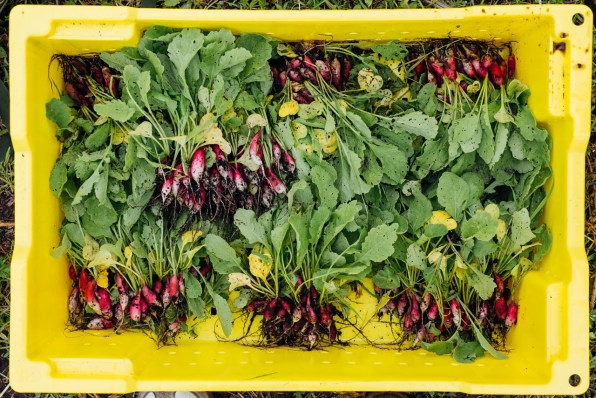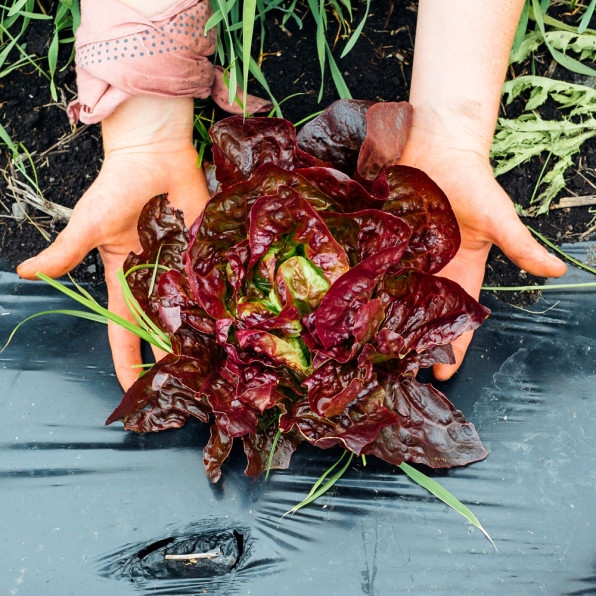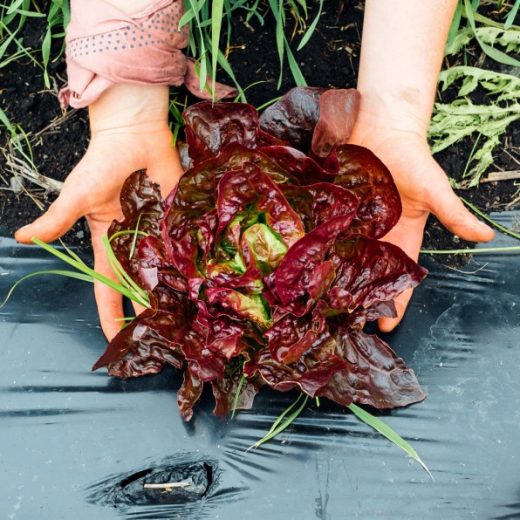Why this restaurant chain is in the farming business
On a 12-acre farm about 60 miles north of New York City, down the street from the center of the Hudson Valley village of Chester, the restaurant chain Dig Inn is beginning to harvest its second season of crops. The chain first leased the farm in 2017, working on six acres. Now, as it doubles in acreage, the company is considering a future that might involve more direct involvement with farming.
Dig Inn has always been a “farm-to-counter” chain; the company, which was founded in 2011 and now has 15 locations in Manhattan, three in Boston, and more in development, works closely with small local farms to source seasonal food for its made-from-scratch salads and sides. But the chain sees advantages to having a farm of its own–and that part of the business could eventually play an important role in sourcing.
In 2017, as it grew 31 different crops on the farm, the company began to experiment with unusual varieties of produce. This year, the restaurant is growing 121 varieties of 45 crops, including a Japanese herb called shiso, heirloom flint corn for making masa for tortillas, and a cilantro-like herb called papalo. Grown in small quantities, the crops can show up as specials at some restaurants. If the food sells well, the company can ask the farmers it works with to grow more.

“We take a risk now–maybe this is a really hard crop to grow and other farmers won’t want to grow on a large scale–but we can try it on our farm to test as a living lab and then move it to our larger-scale partners,” says Larry Tse, Dig Inn’s on-staff farmer. A few crops, such as a variety of tomato that will be harvested in August, will be grown in quantities large enough to be on menus at all of the chain’s restaurants.
As Dig Inn trains its workers, they also have the opportunity to visit the farm to better understand the produce on the menu. “We wanted a centerpiece for our own supply chain that would become our hub not only for our team learning about what it means to run a local, scalable supply chain, but also to invite all of our chefs from our restaurants and pretty much any team member to learn about food and how to grow it,” says Taylor Lanzet, the company’s director of supply and sustainability.

By experiencing the many challenges of growing food, like frosts that destroy crops, or a lack of rain that produces stunted produce, the restaurant says that it can better understand the needs of the farms it works with. As new farmers buy land and begin farming in the area, Dig Inn is attempting to support them with advice and by lending out equipment. But it also sees an opportunity to do more, as an increasing number of farmers begin to retire without plans for succession.
“We’re starting to think about the same type of programming we have in our restaurants, which is to take someone who’s never picked up a knife, and over a number of years turn them into a cook or a chef,” says Adam Eskin, Dig Inn’s founder and CEO. For aspiring farmers, a similar approach could help “introduce more young people into the craft and trade of agriculture.”

The company is considering buying more land, or working with agricultural land trusts, and then offering new farmers a type of toolkit that could make it easier to run a business–with guaranteed sales to Dig Inn, for example, and a truck sent by Dig Inn to pick up deliveries.
Right now, the challenges for new farmers are substantial. “Not only do they have to work the land and combat the weather and actually produce the food, but they need to figure out who to sell it to and at what price to sell it, and how to market it, and how to get it on a truck, and logistics, and all of these things,” says Eskin. “We think that if we present the right opportunity, that we could probably eliminate a lot of those things and make life a lot easier for folks that just want to get on the land and do great work and grow great food.”
At the moment, Dig Inn’s own farm supplies only a tiny fraction of the company’s produce, and there aren’t yet plans to pursue the potential new toolkit for farmers. But as the world of food quickly changes, the company wants to be flexible enough to quickly change how it works with farms as well. The company is focused on two key areas as it looks for a competitive advantage. “I think for us it comes down to your access to the food itself and your ability to both control and impact on the supply side–a really big piece–and then what you do with the food once you get your hands on it,” says Eskin. Having a farm of its own, he says, can help the company with both.
Correction: This article has been updated to reflect Taylor Lanzet’s accurate title.
Fast Company , Read Full Story
(7)


